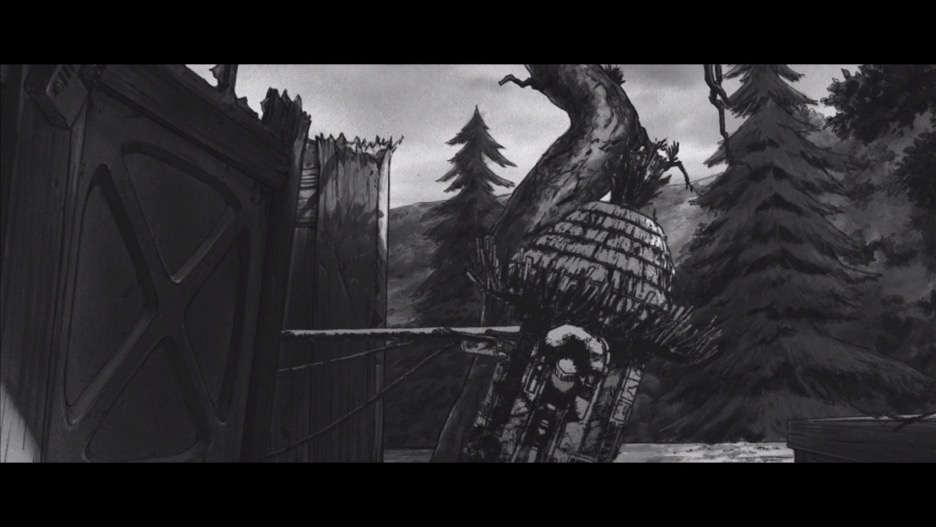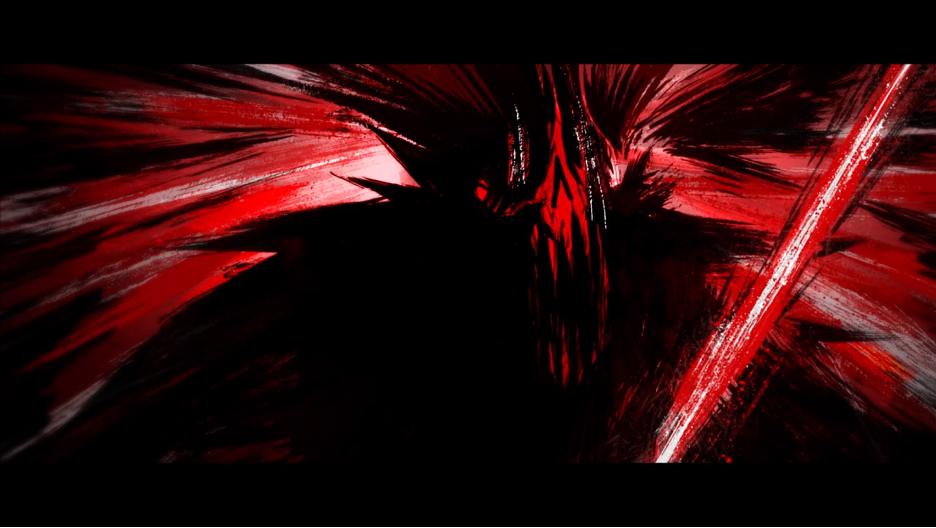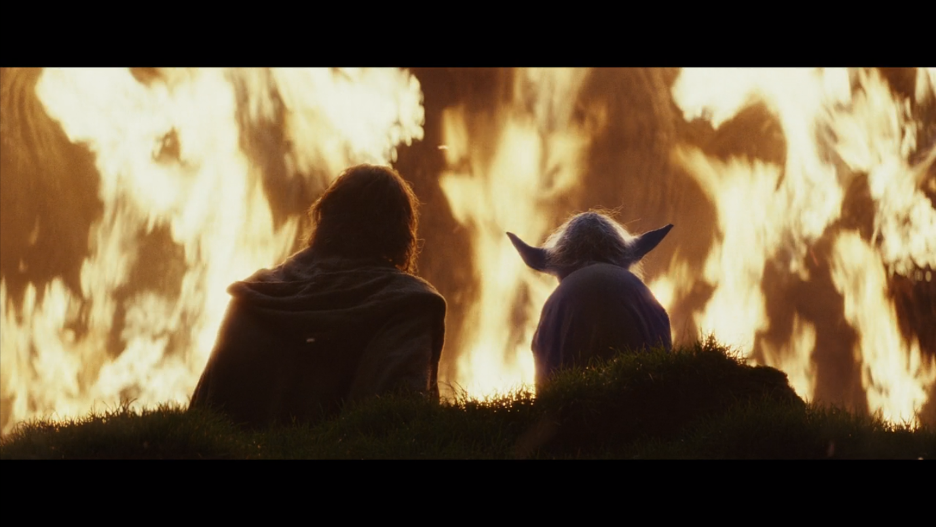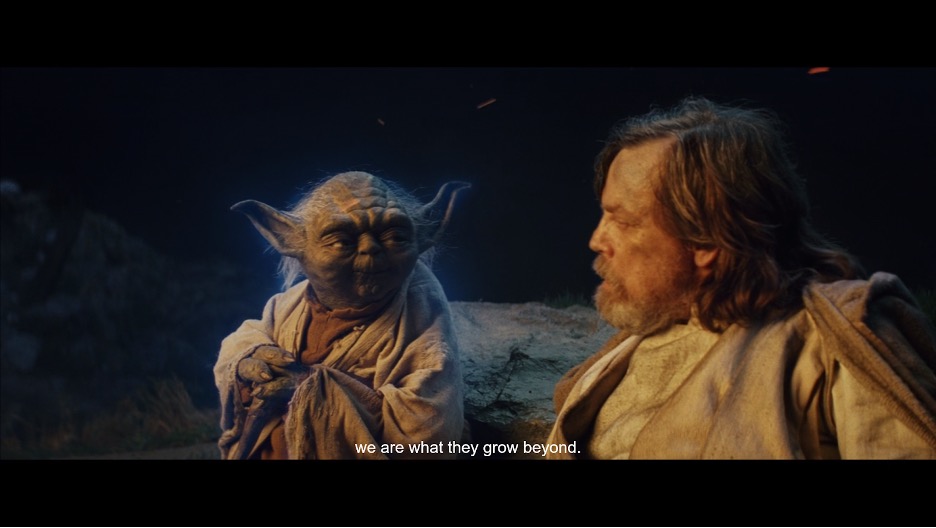“We Are What They Grow Beyond”: Visions (and Sounds) of a Transnational Star Wars
Relatively recently, in a galaxy quite close to home, literary scholar Gerry Canavan vividly captured the ambiguity that shrouded the release of Rogue One: A Star Wars Story (2016). The second Star Wars feature film to be produced after Disney’s well-publicized acquisition of Lucasfilm in 2012, Rogue One was also the first of a planned series of Star Wars “anthology” films which, unlike the nine movies that constitute the mainline “Skywalker Saga,” would function more like standalone spin-offs, focusing more closely on the stories of individual characters and familiar narrative events. In his 2018 chapter in Star Wars and the History of Transmedia Storytelling, Canavan argues that, in a conspicuous break from the mythopoeic identity often associated with the original films, Disney reframed the mythologization of the Star Wars IP (intellectual property) and began to actively “encourage fans to create their own competing canons and visions for the franchise,” thus distinguishing “this” Star Wars from what came before. This interpretation seems remarkably prescient, especially given the near-continuous stream of interconnected spin-off series which have since been produced under the auspices of Disney’s post-Lucas Star Wars, often whimsically bundled together under the umbrella moniker of “The Mandoverse.” Yet, perhaps the most literal manifestation of what Canavan describes—Disney’s active encouragement of “alternative visions of the franchise”—came three years after the publication of his chapter with the release of the aptly titled series of animated films, Star Wars: Visions.
Star Wars: Visions (hereafter Visions) premiered on September 22, 2021, on Disney+. The first volume consisted of nine independent shorts produced entirely by notable Japanese anime studios: from Production I.G. of Ghost in the Shell (1995) fame, to Studio MAPPA of Attack on Titan (2020– ) notoriety. Initially an attempt to unite the distinct worlds of Star Wars and Japanese anime, what was perhaps most striking about Visions was the extent of creative freedom that these animation studios were afforded in their reinterpretations of the narrative and imagery of Star Wars. Many of these shorts made no attempt to situate themselves within the canonical Star Wars timeline, with some even going so far as to retell existing stories in an over-the-top anime aesthetic (e.g., Studio Trigger’s “The Twins”).
This playful, open-ended approach to narrative then presents us with a challenging question: if a transmedia story is one which “unfolds across multiple media platforms, with each new text making a distinctive and valuable contribution to the whole” (per media scholar Henry Jenkins’s definition), how does one approach creative reinterpretations such as these which decidedly go against the whole? While such official non- (or even anti-) canonical tellings of a high-profile IP might seem a bit strange to an international audience, works like these neatly conform with Ōtsuka Eiji’s concept of the sekaikan (世界観, literal trans. “worldview”), a theory of transmedia that elides formulations of canonical narrative. That is, rather than there being one overarching official narrative into which everything must fall neatly, the sekaikan allows for and even relishes in storytelling that expands an initial narrative into what Ōtsuka calls the “Grand Narrative.” Similar Japanese reimaginings of Western properties include the series Blade Runner: Black Lotus (Sola Digital Arts, 2021), Cyberpunk: Edgerunners (Studio Trigger, 2022), and The Animatrix anthology (2003).
Having the first volume of Visions produced entirely by Japanese anime studios, then, (1) situated Star Wars within a particular Japanese (trans)media tradition (the sekaikan) and (2) set the stage for other international animation studios to create their own stories within the Star Wars universe, drawing (no pun intended) on their respective cultures, histories, and mythologies to extend the cultural reach of the Star Wars franchise beyond “canonical” storytelling. Here, then, Star Wars becomes a truly and intentionally transnational property. But what of its music?
We argue that the music of these animated shorts helps situate these new worlds and stories within “a galaxy far, far away.” Depending on their motivations—from creative reimaginings and challenges to narrative, to canonic agnosticism or otherwise—each animation studio chose to either align themselves with John Williams’s neoclassical Hollywood scores (as exhaustively cataloged by Frank Lehman), adapt and/or extend them to represent their respective cultures, or ignore them entirely to offer entirely new musical visions for Star Wars. Just as musical arrangements and adaptations offer one way of challenging (yet also supporting) musical canons, so too do the Visions shorts and their music directly disrupt (yet also extend) Star Wars and its long-lasting cultural legacy.
Volume 1: Filmic Homage and New Voices
The musical implications of the transnational dialogue at play in Visions are manifold. At first listen, one might assume that the cultural magnitude of Williams’s scores would diminish the project’s rich potential for transnational dialogue and instead afford the films a more homogeneously American identity: Rutya Vaidya reminds us of the Star Wars franchise’s enduring American associations and describes how “the films’ narratives elicit a sense of reclaiming ‘Americanness,’” a quality we might naturally extend to the music of John Williams and the sense of “musical Americanism” that Conor Power has ascribed to other works across the composers’ rich body of screen music. This potential is compounded when one considers the extent to which Williams’s music for the original Star Wars (1977) is credited for having set in motion the prominent revival that the classical Hollywood score enjoyed during the 1970s and ’80s. Yet, remarkably, in Visions, these stylistic nods to Williams’s neoclassicism often have the opposite effect: instead of effacing the series’ rich possibilities for musical and sonic representation, national musics garner a more central role as a result of their interplay with the more conspicuously Williams-inspired music that accompanies them in the shorts.
This is perhaps most obvious in the series’ first installment, Studio MAPPA’s “The Duel” (dir. Takanobu Mizuno), a thirteen-minute short that blends the world of Star Wars with references to Japanese cinema and inspirations from the Edo period of Japan’s history. Visual cues throughout the episode reinforce this mélange, e.g. a multi-armed droid is seen wielding several katanas, while the Jedi protagonist Ronin’s R2-unit, B5-56, sports a thatched conical hat. However, perhaps the short’s most striking evocation of Japan is in the short’s unambiguous debts to the films of Akira Kurosawa: in addition to its samurai protagonist, the film incorporates an artificial film grain effect and is animated primarily in black-and-white, reminiscent of Kurosawa’s recognizable penchant for monochromatism. “The Duel” thus serves as an extension of the longstanding dialogue between Japanese and American culture that has long characterized Star Wars, including the original Star Wars trilogy’s debts to Kurosawa (in particular, his 1958 film The Hidden Fortress).

Screenshot from “The Duel” in which B5-56 (an R2-D2 lookalike droid) can be seen wearing a woven conical hat.
This dialogue is no less palpable in the music of “The Duel,” and seems to serve as the kernel of the film’s musical identity. The most conspicuous debts to Williams (and, in turn, to Star Wars’ American origins and associations) are interspersed with discernibly Japanese sonorities: Keiji Inai’s original music for the short’s titular duel sequence unabashedly imitates Williams’s well-known musical cue “Duel of the Fates,” evident in the melodic/rhythmic debts of its repetitive string ostinati, as well as its choral voicings, recurrent modulations, and orchestration choices (e.g. English horn and flute can be heard doubling the melody in both pieces); yet the titular duel’s climax, Ronin’s defeat of the Sith lord, is heralded by a subdued biwa performance by Akiko Sakurai. Conversely, music in the film’s most conspicuously Kurosawa-inspired scenes appears to be afforded an additional degree of Star Wars heft, thus further perpetuating the continual stylistic flux between American and Japanese identities in “The Duel.” For example, the film’s stylized title card, which fills the screen and is written in Aurebesh (a fictional script in the Star Wars universe), evokes the similarly logographic Kanji that might introduce a 1950s Kurosawa film. Yet here, accompanying the film’s most obvious visual homage to the filmmaker, Inai’s orchestral score is unambiguous in its debts to Williams, as a vast crescendo brings to mind the triumphant cadence that concludes most mainline Star Wars films and so often serves as the segue into Williams’s recurring “End Titles” credits music.
In contrast with this attempt to find balance between Williamsisms and Japanese scoring and cinematic practices in “The Duel,” Kinema Citrus’s “The Village Bride” (dir. Hitoshi Haga) moves in a different direction in its transnational aspirations. While the narrative focus is quintessentially Japanese, focusing on a Shinto-tinged environmentalism reminiscent of Hayao Miyazaki’s films such as Mononoke-hime (1997; localized as Princess Mononoke), the music was composed by an Australian composer, Kevin Penkin, who has gained prominence for his anime and game music in the last decade and who is perhaps best known for scoring Kinema Citrus’ award-winning Made in Abyss series (2017– ).
Penkin’s orchestrations include Japanese instruments such as the sho, koto, shakuhachi, and shinobue. However, one of his score’s most striking features is its use of the British singer Emi Evans’s voice and her “Chaos Language,” associated with the (Japanese) NieR video game series. In contrast to something like Williams’s bombastic use of choir in “Duel of the Fates” or “Battle of the Heroes,” Penkin’s score and Evans’s solo voice evoke a kind of ethereal and unstrained vocality. Free from the need to imitate the Williams sound, Penkin’s own compositional voice thus comes to the fore. As he himself has stated of the project, “Because it’s anime, we almost had—in a way—a little more freedom because we were trying something new. That was the ethos of the show.” This freedom also manifests itself in the way the short plays with established Star Wars narrative details, such as the notion of “the Force,” which has been synonymous with the franchise since the initial film was released in 1977. While the Force is present in “The Village Bride,” here it is instead known instead as “Magina.” Indeed, the title of the cue played at the narrative climax is “MAGINA x FORCE,” acknowledging this interplay of old and new. Here, then, we see the initial vision of a Star Wars that is detached from its predecessors.
Volume 2: Mythic Adaptations and Storied Politics
If “The Village Bride” offered a glimpse at what an extended transnational collaboration might sound like, then Volume 2 of Visions was a truly transnational affair. This second set of shorts was produced by animation studios from across the globe, spanning Ireland, the UK, Spain, Chile, France, South Africa, South Korea, and India, as well as an American studio located in Japan.
The film “Screecher’s Reach,” produced by the Kilkenny-based animation studio Cartoon Saloon, serves as an especially intricate case study. Described by the film’s director, Paul Young, as an “Irish ghost story with a twist,” the short imbues its own unique rendering of the Star Wars universe with an Irish identity throughout, centering its story around the Irish legend of the banshee. This national identity is foregrounded at several points in the short, beginning with the film’s opening tableau, in which a bustling workhouse is animated in the same flattened style familiar to audiences of Cartoon Saloon’s three Oscar-nominated features, Wolfwalkers (2020), Song of the Sea (2014) and, most especially, Brendan and the Secret of Kells (2009). The latter is a film that was animated in a style reminiscent of the illuminated monastic manuscripts and Insular artistic style associated with Celtic Christianity. Other signifiers of Irishness persist throughout the film: almost all of the cast speak with Irish brogues, and the script is peppered with Irish colloquialisms and slang. Yet, just as in “The Duel,” it is the musical score for “Screecher’s Reach” which most vividly foregrounds how the film’s Star Wars identity intersects with that of the animation studio’s home country.

Screenshot from “Screecher’s Reach,” featuring the short’s banshee-inspired “Ghost.”
The music for “Screecher’s Reach” was written by the Irish composer and producer Leo Pearson, who scored the film in a primarily symphonic idiom. Notably, his score features a recurring vocal motif performed by the Irish traditional musician and singer Síofra Ní Chasaide, whose vocalizations evoke the Celtic/New Age idiom that has long served filmmakers as a conveniently generic shorthand for onscreen representations of Irishness since its initial popularization in the 1980s. Ní Chasaide’s vocal contributions are especially associated with the film’s titular “haunted” cave, Screecher’s Reach; this is perhaps an unsurprising pairing, especially considering this location’s supernatural properties in the film and the frequent “imbrication of music in discursive tropes positioning Celticity as Other,” as observed by John O’Flynn. Yet here, these implied Celtic qualities serve another valuable function which has been highlighted in recent scholarship on music in Cartoon Saloon’s animated films. During the protagonist Daal’s climactic escape from Screecher’s Reach, the score blends Ní Chasaide’s vocals with conspicuously synthesized sonorities. The resultant texture is thus consistent with Daithí Kearney and Luke Malone’s description of the fusion of contemporary and folk aesthetics that characterizes Cartoon Saloon’s “Irish Folklore” film trilogy and its valuable role in buttressing the studio’s hybridization of traditional and digital approaches.
While “Screecher’s Reach” adopted voice as its musical marker of Irishness, many of the composers associated with Volume 2 elected to spotlight musical instruments from their respective cultures in the scores for their shorts. Perhaps the most striking example of this is composer Lee Byung-Hoon’s use of the Korean taepyeongso (performed by Park Seung Won) in the cue “Lightsaber Duel” from the Visions short “Journey to the Dark Head.” Other notable uses of instruments outside of the Williams paradigm include the caña de millo in “In The Stars,” and the use of the bansuri in “The Bandits of Golak.” The use of these instruments situates Star Wars within these cultures; that is, rather than the (U.S.-based) Star Wars franchise consuming these cultures (and their instruments) and exoticizing them as cultural “Others,” in collaborating with studios from various countries and allowing them to tell their own stories and write their own musics, we argue that there is a state of balance met between the existing franchise and the individual animation studios. After all, the genre of science fiction—especially what some might categorize as social science fiction—allows for a reparative and optimistic telling of what can be, even if these films’ narratives draw upon real-world pains arising from unjust, inequitable histories of exploitation.
Visions of the Future and Lessons from the Past
It is important that we remain mindful that these stories are still told through the framework of what began as an American franchise. More explicitly, by examining the reparative potential of an optimistic transnational project like Visions, we do not mean to dismiss the enduring grip of Hollywood’s soft power. Within any media empire—especially in the case of a multi-billion dollar giant like Star Wars under Disney—there is always the question of power balances and what status quo is being upheld.
In a publicity interview, Producer Kanako Shirasaki described how the original pitch for Visions invited each studio to “explore your Star Wars story and tell us your perspective and your original Star Wars story in the Star Wars universe.” Responding to a follow-up question in the same interview, Lucasfilm Vice President James Waugh confirmed that each studio maintained their creative freedom, with the slight caveat that they “stayed in dialogue” with Lucasfilm and Star Wars throughout the process. In a similar vein, he also noted that the project was nonetheless intended as a “celebration of Star Wars.” So, while “real-world” political analogues were fair game for the studios (as seen in shorts like Volume 2’s “The Pit”), material like this had to be incorporated in ways that would still celebrate the franchise. On the one hand, this means that the legacy of Star Wars is upheld; on the other hand, Visions does this by challenging Star Wars as immutable or consisting of a singular worldview (sekaikan indeed).
If the governing, Taoist-inflected message of Star Wars concerns itself with finding balance, then this balance extends to the old and new, the natural and mechanical, and—musically—to Williams and beyond. While some shorts within Visions audibly strive to uphold Williams’s legacy, others move beyond his looming shadow. As Star Wars: Episode VIII – The Last Jedi (2017) tried to tell us (in no uncertain terms), we must be willing to let the past go, or at the very least, we must not let it govern our lives. Just as Yoda reminds us by proxy through the mythic figure of Luke Skywalker after setting ablaze the Jedi Scriptures:
“Luke, we are what they grow beyond. That is the true burden of all masters.”

Screenshot from Star Wars: Episode VIII – The Last Jedi of Luke (L) and Yoda (R) watching the Jedi Scriptures burn.
If the global logics of transnational collaboration suggest that Star Wars is moving in a new direction, then its musics (pl.) must follow suit. Music, after all, is an elemental component of worldbuilding. Visions, with its transnational roster of production studios and composers, achieves this with special effectiveness: musical motifs, imitations, and allusions all serve as ways of situating this new Star Wars amid the enduring legacy of the original saga. However, alongside these more expected stylistic and sonorous nods, Visions vividly illustrates that it is with new compositions beyond Williams and his paradigm that Star Wars will grow, offering multiple vibrant examples of how this can occur across its first two Volumes. There is, after all, a whole universe of possibilities upon which we all can continue to build and explore.




